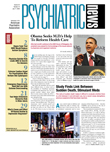Hospital emergency departments are like home was to Robert Frost,“ the place where, when you have to go there, they have to take you in.”
That isn't always so easy. Emergency department (ED) visits rose from 93 million in 1993 to 110 million in 2004, a 12 percent increase, said Scott Zeller, M.D., chief of psychiatric services at Alameda County Medical Center in Oakland, Calif. At the same time, the number of hospital EDs has dropped by 18 percent, so more patients have to be squeezed into fewer places.
Often patients get squeezed out instead. In 2004, there were 500,000“ diversions”—occasions in which ambulances had to be shunted off from a filled ED to another that had open beds. Wait times to be treated were up, and one survey found that each nurse was caring for 4.2 patients and each doctor for 9.7 patients—simultaneously.
“All this leads to increased walkouts by frustrated patients, more medical errors by stressed providers, more negligence claims, and compromised patient care,” said Zeller at APA's 2009 annual meeting in San Francisco in May.
Psychiatric patients aren't the cause of this overload, but often add to the burden, he said.
“ED staff spends twice the time looking for post-ED placements for psych patients and retains them twice as long,” he said. The well-publicized reduction in the number of inpatient psychiatry beds, when added to insurance company pressure to impose limits on reimbursable care, leads to shorter lengths of stay, less likelihood of stabilization, and more chance of a quick return to the ED, he said.
But in fact psychiatric patients aren't “clogging” space in the ED, said Joseph Parks, M.D., director of the Division of Comprehensive Psychiatric Services at Missouri's Department of Mental Health. In Missouri total ED visits grew by 20 percent from 1997 to 2006 (measured in visits per 1,000 population). Mental health visits increased by 50 percent (from 7.0 visits to 10.5 visits/1,000 population), but the mental health portion of all ED visits went up by only about 1 percent (from 1.87 percent to 2.95 percent), suggesting that psychiatric patients alone were not creating the ED crisis.
The increase in ED visits related to mental health, Parks said, stems from a series of policy decisions that have funneled psychiatric patients into EDs, beginning with the elimination of state hospital beds from 1970 to 1990. In addition, law-enforcement personnel wanted to avoid suicide risk from arrestees jailed with psychiatric problems, so they sent these people to the ED. Mental health crisis services were established apart from hospitals, and states didn't require community mental health centers (CMHCs) and hospitals to collaborate.
Finally, the Emergency Medical Treatment and Active Labor Act (sometimes referred to as the “Patient Anti-Dumping Law”) required that hospital EDs accept, evaluate, and stabilize anyone who presents at their doors.
“That makes emergency services an entitlement, unlike any other mental health service,” said Parks.
“Everybody wants somebody else to take care of psychiatric patients,” he said. “The EDs think their job is not to do mental health or substance abuse, but that's what they do, and as a result, they do it badly.”
Dealing with psychiatric patients in the ED is not just a matter of numbers, said Parks. His analysis of ED crowding sounds more like a problem in hydraulic engineering than health care. “You have to think about capacity, inflow, processing time, and outflow,” he said.
Part of the problem is the internal resistance to admitting psychiatric patients, said Parks. “Hospitals chose to close their psychiatric units, and then they wonder why those patients are showing up in the ED.”
In Missouri, the legislature allocated funds to community hospitals to buy services from CMHCs. Medicaid already permitted states to add payments for“ extraordinary” services, such as psychiatric ED services or involuntary-commitment inpatient beds. Parks surveyed hospitals in Missouri to see how they were using this option.
At least 43 community hospitals in Missouri have inpatient adult psychiatric units, and 23 (with 688 beds) responded to Parks's survey. Of those, 21 were set up to handle involuntary patients. Between 23 percent and 35 percent of the inpatient psychiatric beds were occupied by substance abuse patients. Average occupancy was 75 percent, and the adult length of stay was usually five or fewer days.
“Hospitals associated with CMHCs generally had better clinical and financial outcomes,” said Parks.
Hospitals could even make money by maintaining inpatient psychiatric units and allying with (or buying) CMHCs where they can send patients once they are discharged to the community, if the Missouri experience is any example. Twenty of the 23 hospitals responding to the survey operated their psychiatric units at a profit, charging an average rate of $919 per day. The survey provided some insight into why they were able to do so.
First, the hospitals had to make the commitment to deliver the mental health services the community needed, said Parks. They also needed to ensure high occupancy rates by means of a no-reject policy that did not exclude patients with substance abuse or those presenting involuntarily. Nonadmission of a qualified patient resulted in a next-day conference to justify the rejection. The hospitals had to hire qualified staff members who were employed by the unit, not in private practice. They needed at least 20 beds and had to keep them full.
The close connection with the CMHC is needed to ensure adequate follow-up care for patients after they leave the inpatient unit.
Hospitals' reluctance to create space for psychiatric patients has not been an accident but a matter of their own choice, said Parks. Hospitals buy practices and facilities all the time, so they could do well by buying CMHCs, if they chose, and could make money doing it, he said. ▪

